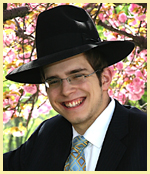Pesach 5777
[Editor’s note: As a memory of my beloved brother Shaya, I would like to continue sending out his pearls of wisdom that he has shared with all of you in the past. For some of you this may ring a bell and for others it may appear to be totally new. May the learning of Shaya’s Divrei Torah inspire us to change our ways and thereby give an Aliya to the neshama of our dear beloved Shaya whom we miss so much.]
Here are some Divrei Torah for the Seder night and Pesach in general:
Dvar Torah I
There is a passuk in davening that bothered me for a long time. The following is the translation of that passuk: “For forty years I was angry with the generation and I said they are an errant hearted people and they do not know my ways; therefore, I have sworn in My wrath that they shall not enter My land of contentment.” This passuk repeats what Hashem said to Klal Yisroel after they sinned many times in the Midbar, with the “breaking point” being the sin of the Meraglim. When would one imagine these words should be recited?
Probably the first time that would come to mind would be Tisha B’av, when we mourn the destruction of the Beis Hamikdash, as well as our sins which prevent the redemption. But no, we say these words every Friday night in the Kabbalas Shabbos davening, moments before we usher in the Shabbos queen. At the onset of the happiest and holiest day of the week we mention one of the worst sins in the history of Klal Yisroel! What is the correlation between Shabbos and Klal Yisroel’s sins?
Here is the explanation I came up with [If anyone reading this Dvar Torah has another approach please share it with me].
The Seforim discuss that Shabbos is connected to Teshuva. The root of the word Shabbos is “Shav;” the same root as the word Teshuv, “return.” The six days of the week can blind us from performing our Avodas Hashem. Shabbos allows us to relax from the tension of the week, ascertain our level of Avodas Hashem, and determine which strategies we can implement to help us make the next week a more spiritual one. Hence, we specifically mention the worst sin in our history at the beginning of Shabbos to teach us that Teshuva exists even for the gravest of sins. Especially on Shabbos, we can tap into the essence of the day: doing Teshuva.
Pesach is referred to in the Torah as Shabbos; hence, I believe it has this special ability for Teshuva as well. In fact, one of the themes of Pesach is that we “begin with shame and end with praise.” No matter what one’s background or past may be, there is always opportunity and place for Teshuva.
May we all be able to improve during this shabbos-like Yom Tov. May we merit during this “Zeman Chayrusaynu” to true freedom from our bad habits that bog us down, and to be able to regenerate and invigorate our special relationship with our Creator.
Dvar Torah II
The Seforim explain that the Shalosh Regalim correspond to the Shlosha Avos, and Avraham Avinu signifies the regel of Pesach. What is the relationship between Avraham’s outstanding performance of the mida of Chesed and Klal Yisroel on Pesach?
I have previously sent out the following Dvar Torah, but I feel it will appropriately answer the above question.
The Pasuk uses the term “vichamushim” to describe Bnei Yisroel’s “appearance” as they left Egypt. There are a number of explanations for what ‘vichamushim’ means:
[1] Only one fifth of Klal Yisroel left Egypt. Four fifths of Klal Yisroel were killed during the plague of darkness, as they were not worthy of redemption.
[2] The Jews were armed with Mitzvos. A question on this explanation is that the Pasuk tells us that on their very last day in Egypt, the Jews were empty of Mitzvos. So what Mitzva did they have now when they left?
[3] Targum Yonasan explains “vichamushim” means each family had “5 tafla.” Tafla means children, so the simple understanding of the Targum is that each family had five kids. A glaring question on this explanation is that from EACH pregnancy the women had [at least] SIX kids. So what then does the Targum mean that they only had FIVE TAFLA??
The Baeir Yosef provides us with a beautiful approach that answers all these questions and ties all three explanations together. He explains that the four fifths of Klal Yisroel who died, were only the Jews twenty or older who were of age to be punished by the heavenly court. Their kids were certainly not deserving of punishment and were therefore not killed. Thus, there were many orphans who had no parents.The Baeir Yosef suggests that the remaining one fifth of Klal Yisroel adopted all the orphaned kids! That is what the Targum means when he says “5 Tafla,” i.e. five FAMILIES of kids. In addition to their own children, each family adopted four other families so that all the kids of the four fifths of Klal Yisroel who died would have surrogate parents! That was the big Mitzva that they were armed with when they left Egypt!
According to the aforementioned explanation, the Jews did indeed emulate Avraham’s mida of Chesed. Keep in mind that they had no provisions for their own families let alone for the hundreds [according to some calculations] of orphaned children they were adopting! So it was truly a magnanimous act of Chesed.
As Pesach dawns upon us, how can we emulate this noble Mida of Chesed of our ancestors?
We all know that throughout the recent generations there have been many Jews who have not remained committed to Yiddishkeit. They have produced many “orphans,” kids and even grownups, who don’t know anything about the beauty and depth of Yiddishkeit and what our purpose in life is. There are a number of organizations and special people out there to help fix this sad trend. All of the Gedolei Yisroel laud their work and encourage and ask all of us to do our share in this holy Mitzva. We can support these organizations [each person according to his/hers financial situation] AND do our share in bringing these “orphans” close to Yiddishkeit by inviting them to our Shabbos & Yom Tov tables, talking & acting respectably in the workplace.
In the merit of this crucial Mitzva which parallels the Mitzva that Klal Yisroel performed when they left Egypt, may we soon merit the final redemption, speedily in our days!
Dvar Torah III
In Parshas Yisro, Hashem revealed Himself to us in an otherworldly way. Following immediately thereafter, Parshas Mishpatim enumerates the numerous laws pertaining to the daily life of a Yid. What is the correlation between these two parshiyos, where in Parshas Yisro we were elevated to an almost supernatural level, and then in Parshas Mishpatim, brought back down to the regular mundane life?
Rav Shraga Simmons explains that the 2 Parshiyos are two sides of the same coin; the spiritual high of Sinai is gratifying, but it doesn’t solve the problem of the world in which we live. Spirituality is not achieved by meditating alone on a mountaintop or by learning in an out-of-the-way monastery. Jewish spirituality comes through grappling with the ordinary, elevating the mundane.
Hence, we must learn and practice the halachos of everyday life in order to truly elevate everything we do as we interact in the real world.
What, then, was the purpose of the super high revelation at Mount Sinai?
The answer is that we all need a powerful and spiritual experience to boost ourselves. It gives us the knowledge and conviction that we are on the right path doing what Hashem wants us to do. The Rambam likens it to one trudging along in a dark and rainy storm, lost, unsure where to go and what to do. Then, there is a sudden flash of lightning-it doesn’t last long and doesn’t come often-but it illuminates the path on which he is traveling, showing him where to go. That was the purpose of the revelation at Mount Sinai. And now, once we have witnessed that “illuminating light” we must channel its inspiration into our daily lives, trying to elevate all the “mundane” things we do.
We find this theme on Pesach as well.
Why do we call the second phase of the Seder “Urchatz,” which literally means “AND washing,” instead of “Rachtzah [washing]”? The Author of the Hagada is teaching us that this washing immediately after Kadeish is very much connected to Kadeish. How so? We start off the night and the entire special Yom Tov of Pesach by sanctifying it with the Kiddush blessings over wine. This gives us the opportunity to tap into the very special holiness of Pesach and the ability to feel truly awesome and holy. To keep this holy atmosphere going, we must immediately afterwards continue to be exacting in our adherence to halacha. Hence, it’s called AND washing, to teach us that this halachik technicality is very much connected to the Kadeish that was right before it!
[The above Dvar Torah I heard from Rabbi Dovid Gottlieb but I don’t remember the source he was quoting.]
Let us try to work on learning and practicing Halacha, even when we don’t always feel Hashem’s presence, and thus truly elevate our daily lives. May we soon merit the final redemption, where the awesomeness and holiness of Hashem and his Torah will be revealed and felt for all eternity.
Dvar Torah IV
I heard a nice vort from Rabbi Frand regarding the meaning of the song we sing at the end of the Seder “Echad mee yodayah, Shinayim mee yodayah…” If one were to say “Nine Eleven,” one would immediately associate that with September 11th, 2001, the day the World Trade Center (Twin Towers) were destroyed. If one were to say the date of your birthday, you would immediately say “that’s my birthday.” The same is true with your street address, phone number, and any other number that has much significance to you.
Hence, the explanation in this song is that after such an uplifting holy night of Kadeish, four kosos, Magid, Seudas Yom Tov, Hallel…., we should hopefully be on the level to immediately associate the regular numbers with spiritual topics & ideas. What does the number one mean to me? The only thing I associate with one is the Ribono Shel Olam. The only thing I associate the number two with is the luchos. The only thing I associate three with is the Avos…
Dvar Torah V
The Torah refers to Pesach as the “Chag Hamatzos,” whereas we call it “Pesach.”
Why the difference in language?
Rav Levi Yitzchok from Berditchev explains that we know that Matza symbolizes the fact that we were in a rush to leave Mitzrayim without waiting to let the dough rise and with no other provisions we followed Hashem into the Midbar, trusting that he would provide for us. So Hashem in the Torah lovingly refers to this Yom Tov as “Chag Hamatzos,” praising us for what WE did. Whereas “Pesach” represents that Hashem was pasach/passed-over the houses of our ancestors in Mitzrayim. So we refer to this Yom Tov as Pesach; lovingly praising and thanking Hashem for what HE did for us!



